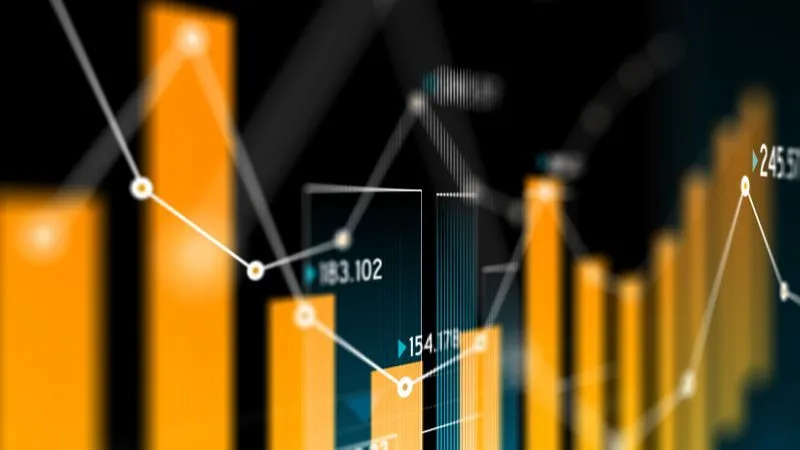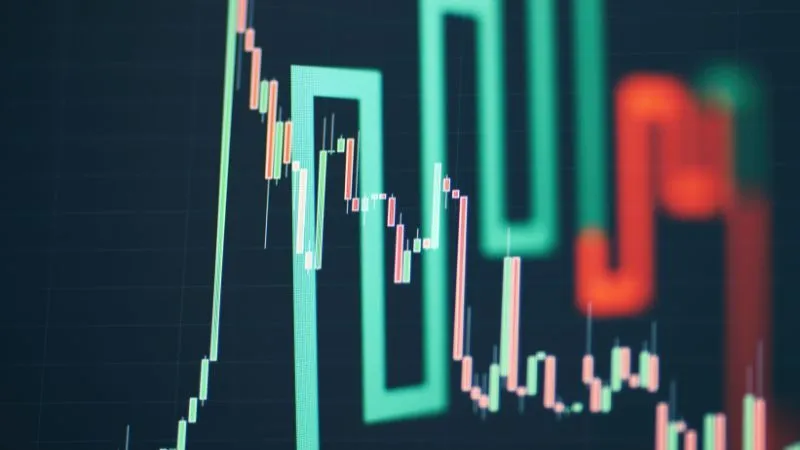Monday Mar 18 2024 01:32

10 min

As an investor, I have always been intrigued by the concept of Separately Managed Accounts (SMAs).
These investment vehicles offer a unique approach to portfolio management, providing investors with the opportunity to have their assets professionally managed while still maintaining individual ownership of the securities.
In this article, we will enter the world of SMAs and explore the key differences between short-term and long-term investment strategies.
Simple Moving Averages (SMAs) serve as fundamental tools in technical analysis, enabling traders and investors to identify prevailing market trends and potential zones of support and resistance.
By averaging the asset's price over a selected time frame—commonly 50, 100, or 200 days, SMAs help to mitigate the effects of short-term volatility and offer a clearer view of the long-term price momentum.
This moving average is versatile, allowing customization to suit various trading strategies and time frames, making it a staple indicator for market participants looking to assess trend strength and direction.

The SMA is calculated by adding together the closing prices of an asset for a set number of time periods and then dividing that total by the number of periods. Mathematically, the SMA formula is expressed as:

Where P1, P2, P3,..Pn represents the closing prices over n periods. This arithmetic not only flattens out data series fluctuations but also simplifies the historical price data to a single line, aiding in the detection of trends and patterns within the market's movements.
As new data becomes available, the SMA updates by dropping the oldest price in the period and including the newest price, maintaining a constant period length for the average.
When it comes to investing, one of the first decisions we need to make is whether to adopt a short-term or long-term investment strategy.
Short-term strategies are focused on capitalising on immediate market opportunities, while long-term strategies aim to generate consistent returns over an extended period.
Both approaches have their merits and drawbacks, and understanding the nuances between them is crucial for making informed investment decisions.
Short-term SMAs offer several advantages for investors looking to take advantage of market fluctuations. One of the main benefits is the ability to quickly react to changing market conditions, allowing for timely adjustments to the portfolio.
Moreover, short-term SMAs provide the potential for higher returns in a shorter time frame, making them an attractive option for investors seeking more immediate gratification.
Additionally, short-term SMAs offer greater flexibility, allowing investors to take advantage of various investment opportunities as they arise.
On the other hand, long-term SMAs are designed to provide investors with consistent returns over an extended period. One of the key advantages of long-term SMAs is the ability to ride out market volatility and benefit from compounding returns.
By taking a long-term perspective, investors can avoid knee-jerk reactions to short-term market fluctuations, which often lead to poor investment decisions. Furthermore, long-term SMAs offer the potential for greater tax efficiency, as long-term capital gains are typically subject to lower tax rates.
When deciding between short-term and long-term SMAs, there are several factors that investors should consider. Firstly, it is essential to assess your investment goals and time horizon.
If you have specific short-term financial objectives, such as saving for a down payment on a house or funding a child's education, a short-term SMA may be more suitable. On the other hand, if you are investing for retirement or other long-term goals, a long-term SMA may be a better fit.
Additionally, risk tolerance is a crucial factor to consider. Short-term SMAs tend to be more volatile, while long-term SMAs offer a more stable and predictable investment experience.
There are several common misconceptions about SMAs that can cloud investors' judgement. One of the most prevalent misconceptions is that SMAs are only suitable for high-net-worth individuals.
While it is true that SMAs were traditionally available only to wealthy investors, the landscape has evolved, and SMAs are now accessible to a broader range of investors.
Another misconception is that SMAs lack transparency. In reality, SMAs provide investors with full visibility into their holdings and transactions, ensuring transparency and accountability.
Lastly, there is a misconception that SMAs are overly complex and require a high level of investment knowledge. While SMAs do require a basic understanding of investment principles, they can be an accessible and straightforward investment option.

Building a diversified SMA portfolio is essential for managing risk and maximising returns. The first step in constructing a diversified portfolio is to determine your asset allocation strategy. This involves deciding how much of your portfolio should be allocated to different asset classes, such as stocks, bonds, and alternative investments.
Next, it is crucial to research and select a diverse range of investment managers who specialise in different areas of the market. By diversifying your investment managers, you can mitigate the risk of any single manager underperforming.
Lastly, regular monitoring and rebalancing of your SMA portfolio is essential to ensure that your asset allocation remains aligned with your investment goals and risk tolerance.
While SMAs offer many benefits, it is essential to be aware of the risks and challenges associated with these investment vehicles.
One of the main risks is the potential for underperformance. As with any investment, there is no guarantee of positive returns, and investors must be prepared for the possibility of loss.
Additionally, SMAs can be subject to liquidity constraints, particularly in times of market stress. This means that it may be challenging to sell assets quickly if needed. Finally, the fees associated with SMAs can be higher than those of other investment options.
It is crucial to carefully consider the fees and expenses associated with SMAs and assess whether the potential benefits outweigh the costs.
For individuals considering investing in SMAs, there are several key considerations to keep in mind. Firstly, it is crucial to thoroughly research and select a reputable and experienced investment manager.
The track record, investment philosophy, and risk management approach of the manager should align with your investment goals and risk tolerance.
Additionally, it is important to carefully review the investment strategy and objectives of the SMA and ensure that they are in line with your own investment objectives.
Lastly, ongoing communication and transparency with your investment manager are vital for maintaining a healthy and productive relationship. Regular updates and performance reporting will help you stay informed and make informed investment decisions.
SMAs offer investors a unique and powerful tool for managing their investment portfolios. Whether you opt for a short-term or long-term SMA strategy, understanding the differences and benefits of each is crucial for making informed investment decisions.
By considering factors such as investment goals, time horizon, risk tolerance, and asset allocation, investors can choose the SMA strategy that aligns with their objectives.
However, it is important to remember that investing in SMAs, like any investment, carries risks. Diligent research, ongoing monitoring, and a disciplined approach are key to maximising the potential benefits of SMAs and achieving your investment goals.
Compare our CFD trading products and services to find the right one for you!
“When considering “CFDs” for trading and price predictions, remember that trading CFDs involves a significant risk and could result in capital loss. Past performance is not indicative of any future results. This information is provided for informative purposes only and should not be considered investment advice.”